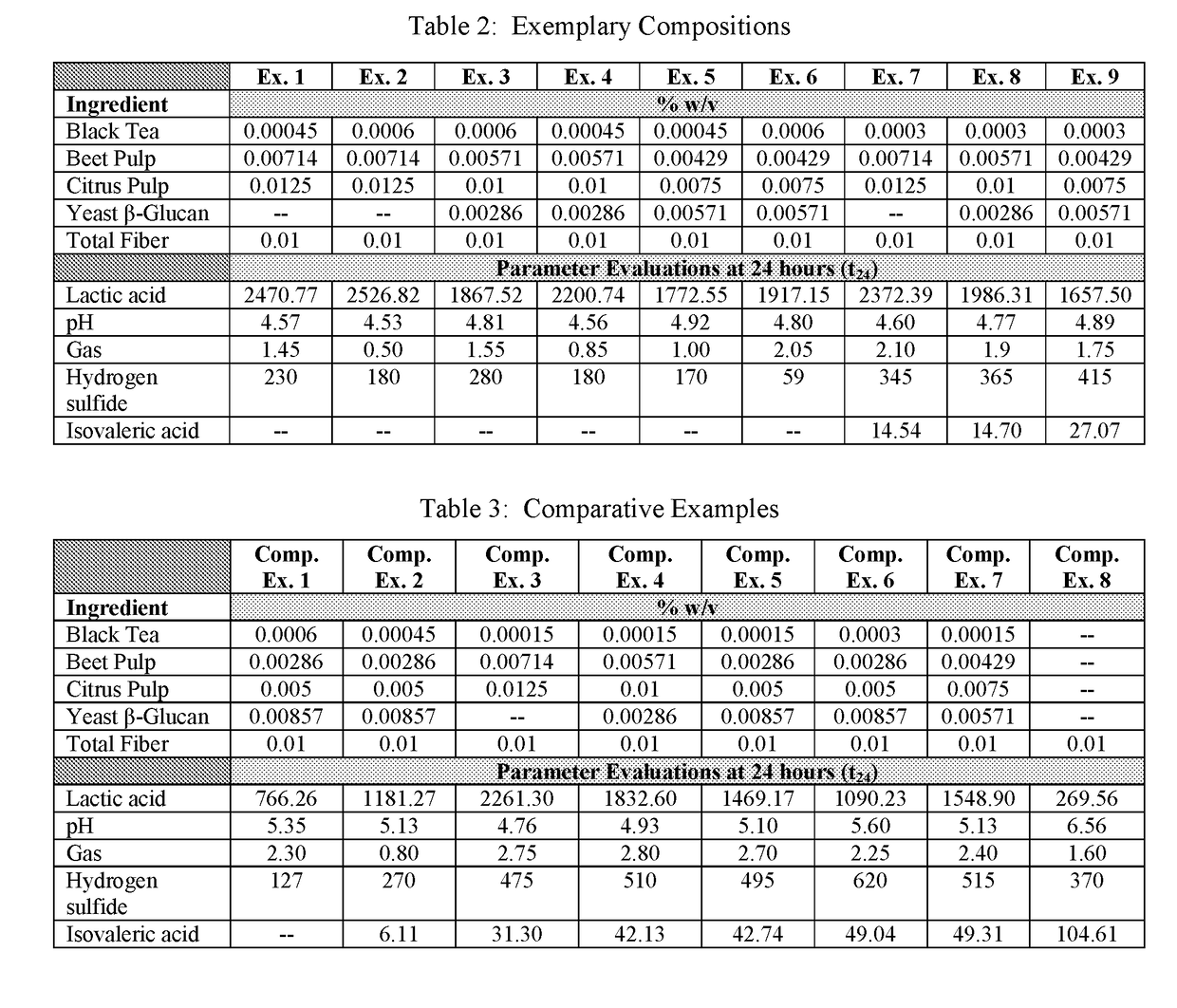Pet Food Compositions
a technology for pet food and compositions, applied in the field of pet food compositions, can solve the problems of reducing the potential for production and absorption of microbial metabolites known to improve colon health, affecting health and social interaction, and affecting the health of the patient,
- Summary
- Abstract
- Description
- Claims
- Application Information
AI Technical Summary
Benefits of technology
Problems solved by technology
Method used
Image
Examples
example 1
[0042]An exemplary pet food composition (Example 1) is prepared as set forth in Table 1 below. All amounts are provided in weight percent, based upon total weight of the pet food composition. The composition is formulated according to the nutrition standards set forth by the American Associated of Feed Control Officials (AAFCO) and the National Research Council (NRC). The composition may be produced by extrusion, dried, and then optionally coated with palatants.
TABLE 1Preferred Active IngredientContent Range(% w / v)Citrus Pulp0.05-3 Beet Pulp0.5-2 Oxidized Camellia Extract0.05-0.25Corn, starch, common canning40-50Hydrolyzed Chicken Liver and30-40HeartSoybean oil, crude, degummed2-6Cellulose, Pelleted1-5Chicken, liver, digest, optimizor1-5LDPE HLactic acid, food grade1-3Calcium carbonate1-3Dicalcium phosphate1-3Choice White Grease / Phos Acid0.1-2 Flay Gen#1 + CWG0.1-2 Glyceryl monostearate0.1-2 Potassium chloride0.1-2 Natural flavor, Pork, Liver,0.1-2 Digest, D'TSodium chloride,...
example 2
[0043]Five (5) canines were randomly selected from a general population of beagles and mixed breed dogs. The canine subjects consisted of both neutered males and spayed females, who consumed varied, but typical, canine maintenance foods. The canines were selected to provide a varied compilation of feces that accurately represents the companion animal canine population at large; and would allow an objective assessment of the impact that a specific ingredient, or combination thereof, may have on a particular endpoint.
example 3
[0044]Feces were collected from dogs fasted overnight into plastic bags containing oxygen absorbing packs to reduce oxygen tension and maintain viability of anaerobic microbiota. Pooled feces were homogenized in bacterial minimal media and separated of the largest particulates by centrifugation. After adding glycerol as a cryoprotectant the aliquots of viable bacteria were frozen and stored at (−) 80 C. Black tea and prebiotic fiber blends were sterilized via pasteurization prior to reconstitution in sterile water. Bacteria were incubated with prebiotic fiber as a carbon source as well as a published minimal media; methionine was added as a supplementary sulfur source. During (6 hours) and after (24 hours) of anaerobic incubation, production of lactic acid, pH in the colonic lumen (as observed in an in vitro colonic model), hydrogen sulfide (H2S), and branched short chain fatty acids (BSCFA) were measured. The results of these experiments for nine (9) exemplary compositions of the p...
PUM
 Login to View More
Login to View More Abstract
Description
Claims
Application Information
 Login to View More
Login to View More - R&D
- Intellectual Property
- Life Sciences
- Materials
- Tech Scout
- Unparalleled Data Quality
- Higher Quality Content
- 60% Fewer Hallucinations
Browse by: Latest US Patents, China's latest patents, Technical Efficacy Thesaurus, Application Domain, Technology Topic, Popular Technical Reports.
© 2025 PatSnap. All rights reserved.Legal|Privacy policy|Modern Slavery Act Transparency Statement|Sitemap|About US| Contact US: help@patsnap.com

